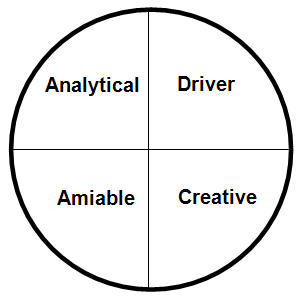Power in most corporations is directly related to proximity to the revenue stream. Why? Because power comes from revenue. No revenue, no company. That’s why it’s unusual to find someone in R&D running a company. It doesn’t mean there aren’t exceptions. R&D is important. So are manufacturing, operations, finance and so on. Certain companies may exhibit dominance in one discipline because of their orientation or market. But in companies where there is tension or conflict between sales and marketing, the disconnect at some root level, has to do with control. And control is often what power is about, if not life itself.
So in corporate organization structure, you often find that the marketing department reports to sales and not the other way around. In larger organizations you may find each function reporting to a higher level separately. But the rationale is that since sales generates the revenue, sales should have access to and control of the resources that help generate leads and develop markets. I’ve also observed that very few marketing professionals have sales experience, and also very few sales people have had real marketing experience. So at some fundamental level, there is often either a power differential or experience differential that can lead to problems.
Marketing is often perceived by sales as doing “strategery” and other less immediate or longer term functions such as brand development, messaging and forecasting. In contrast, sales often has a very short term focus on… what else, sales. The links between these activities, while obvious to one function, are not so obvious to the other. The result is a disconnection.
Of course it’s not quite this simple, but here are a couple of suggestions and an action that can help bridge the gap.
Marketing, what if your job is to make sales cry? There are two ways to do this. The first is by not providing sales with what they need. The second is to make them so happy with qualified leads that they cry. It’s as simple as that. In terms of the power structure, maybe it’s time to get over it. Ask them what they want, give it to them, and make them cry.
On the other hand, Sales, if you happen to be receiving qualified leads, what makes you think you know anything about marketing? Just because you have control doesn’t mean you need to exercise it. Maybe it’s time to ask marketing what they recommend and why, then back them up and help them do it.
I once questioned a VP of Sales on the wisdom of actions his team was taking with prospects. He seemed to take this as criticism from marketing and asked me if I wanted to be in sales. He then went on to recite the famous Jack Nicholson speech in a Few Good Men, saying that the company needed him on the “wall”. I get it. Sales is tough. He didn’t appreciate my answer when I asked him if he was standing on the right wall (typically a marketing function). But besides my abruptness in this exchange, it got me to thinking about personality types (which will be discussed in detail in a later post).
In a simplified version the Meyers-Briggs assessment, there are four major personality types. Everyone is a blend of these to some extent, but you tend to find certain personality types excelling at certain business functions. As an example, you don’t tend to think of accountants as creative (though they can be), they tend to be more analytical. For simplicity, look at the following diagram.
Sales people tend to the Amiable, (they can make people feel comfortable with them) and sales leaders add the trait of being Drivers. The sales VP I referred to above was a tank commander. Marketing is often thought of as being creative, and increasingly analytical. The question, “Which wall do you want to stand on?” requires analysis. So sales and marketing make an interesting compliment. If one combines the sales and marketing strengths, one gets a better balanced effort. Let the Driver lead the customer. Let the Analytical say where to drive, let the Creative find the shortest route and let the Amiable make it fun. How does one assure this?
There are lots of ways, but the most obvious often gets overlooked. Besides making sales cry and letting marketing do what it recommends, it makes sense that sales and marketing are compensated on exactly the same results… revenue. This doesn’t mean that each function can’t also be measured on different criteria, say leads generated or leads closed. It’s also important to make sure that the incentive portion is significant enough to cause both disciplines to listen to each other and act in concert. Both butts in the same boat will work a miracle on focus and cooperation.


My 2 cents…
After hundreds of thousands of profiles being completed across ages, genders, roles, ethnicities, etc…the distribution is still somewhat even. Although sales people will stereotypically be labeled as Extroverted Feelers (or Expressive, or in your model, Creative), there is no information to back that up. The basics for people gathering and processing is only statistically validated on gender (thinking vs. feeling).
So, I caution people on “labeling” as it really allows people to be lazy rather than truly understand who people are and what makes them tick.